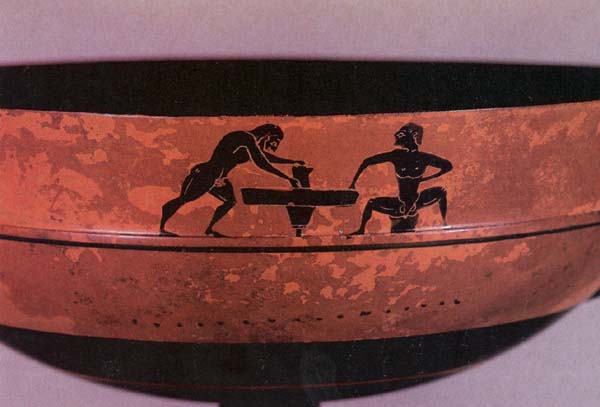Image Details

Badisches Landesmuseum Karlsruhe
The potter’s wheel advanced the potter’s art by “automating” the rotation of the pottery piece being fashioned. The rapid and steady movement of the wheel enabled the potter to achieve a smoother finish and more nearly uniform thickness than by hand. However, the wheel still had to be given a periodic push by hand, either by the potter or his assistant, as seen in this painted Greek vase from the fifth to fourth centuries B.C.E. The Hellenistic invention of a lower wheel that could be pushed by the potter’s foot eliminated the need to push the wheel by hand (see photograph of modern potter at work).
This invention, however, was only one of many made during the Hellenistic period (336–44 B.C.E.), a time of remarkable innovations surveyed by Abraham Levy in the accompanying article.
